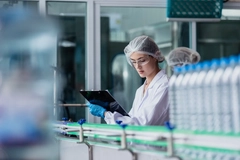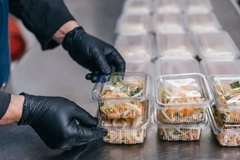Plastic packaging may drive antimicrobial resistance, study suggests

Plastic packaging — at every stage of its lifecycle — may contribute to the development and spread of antimicrobial resistance (AMR), which poses “one of the greatest threats to modern medicine,” according to a new study.
The research, published in the Journal of Hazardous Materials, emphasizes that plastic may be a key driver in AMR. Without intervention, scientists indicate that drug-resistant infections are expected to become the leading cause of death worldwide by 2050.
The researchers analyzed the entire plastic lifecycle, from raw material extraction and manufacturing to usage, disposal, and recycling, and identified multiple “touch-points” between plastic materials and AMR.
Emily Stevenson, lead author and PhD researcher with the University of Exeter and Plymouth Marine Laboratory, UK, tells Packaging Insights: “Our reliance on fossil fuel-derived plastics may be inadvertently driving the evolution of AMR within environmental populations of bacteria.”
“By using plastics that do not naturally biodegrade, we are providing pathogens with a substrate to grow, proliferate, and share genetic information, like genes providing resistance to antibiotics. By swapping to more sustainable packaging, many of the links and concerns drawn upon in this research would diminish.”
Possible exposure pathways
The study looked into plastic packaging, where commonly used additives may pose health risks.
 There are multiple drivers of plastic demand and pollution that are causing the AMR crisis.Bisphenols, used in food containers and drink bottles, have been shown to pose an AMR selection risk and promote the transfer of a clinically important multidrug-resistant plasmid (bacterial DNA). This could potentially exacerbate the spread of AMR in bacterial communities.
There are multiple drivers of plastic demand and pollution that are causing the AMR crisis.Bisphenols, used in food containers and drink bottles, have been shown to pose an AMR selection risk and promote the transfer of a clinically important multidrug-resistant plasmid (bacterial DNA). This could potentially exacerbate the spread of AMR in bacterial communities.
Phthalates, used to make plastics more flexible, have also been found to promote horizontal gene transfer of AMR genes in the environment.
The scientists say growing chances of human exposure to these chemicals could increase co-selection for AMR within the human body. One route of human exposure includes traces of heavy metals, such as those found in food packaging.
Multiple studies found that hot foods can “increase the concentrations of contaminants leaching from the polymer, and that metals diffuse at a greater rate from plastic containers into food than paper containers.”
Of particular concern is metalloid antimony. This compound, linked to treatment failure as a result of AMR, can leach from recycled plastic bottles at levels exceeding US Environmental Protection Agency safety limits.
Professor Pennie Lindeque, co-author on the paper and head of group for Marine Ecology and Society at Plymouth Marine Laboratory, adds: “AMR may be an inadvertent driver of plastic production, use, and pollution. For example, the demand for single-use plastics to ensure sterility in clinics could increase plastic waste.”
“Furthermore, microbial pandemics, like COVID-19, have increased single-use plastic personal protective equipment, with vast quantities of waste resulting from discarded masks and gloves.” The scientists are exploring AMR evolution, transmission, and exposure across the life cycle of plastics.
The scientists are exploring AMR evolution, transmission, and exposure across the life cycle of plastics.
Potential hotspots
The study also warns about contamination at waste disposal sites and recycling facilities. Landfills are known to concentrate emerging chemical contaminants, including antibiotics, heavy metals, and personal care products. The researchers suggest they may create conditions for the development of AMR.
The scientists note that recycling plastics could result in the accumulation of hazardous chemicals in secondary material. They cited from a previous study that reprocessed plastics from household waste had the highest metal concentrations. Efforts to boost recycling rates could lead to greater metal concentrations in recycled plastics in the future.
Moreover, washing agents and biocides used in recycling may persist and support AMR co-selection.
Stevenson shares that there is research which shows that extreme weather could “increase run-off of microbes from agricultural fields applied with bio-solid fertilisers, and also increase the frequency of raw sewage spills into the environment.”
“This, coupled with increasing aquatic temperatures, would increase the abundance, diversity, and survival of potential human or animal pathogens in waters of commercial and recreational importance.”
“If we throw plastics into the mix, these substrates could further increase the survival of these pathogens, and, concerningly, present an exposure route to both animals and humans,” she concludes.











